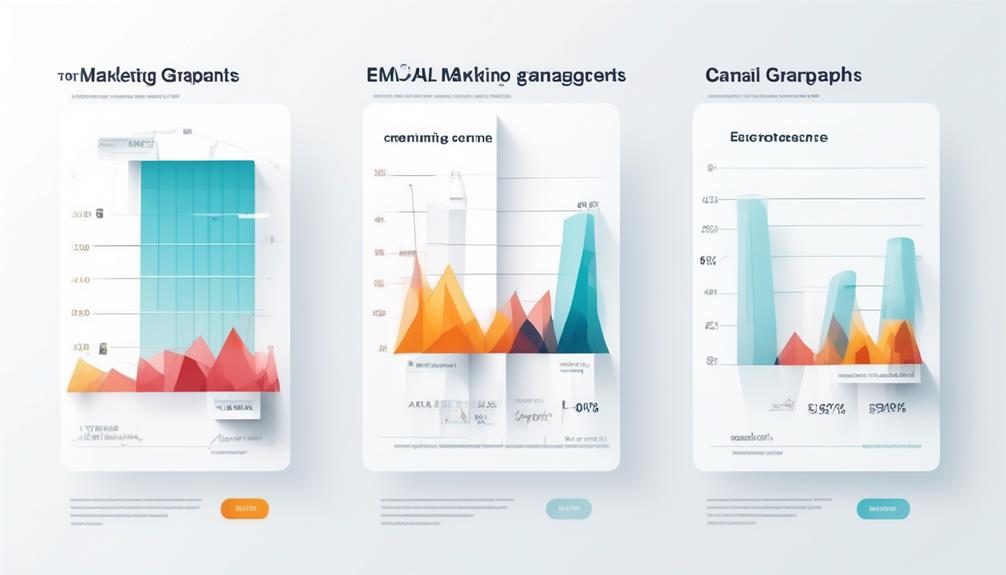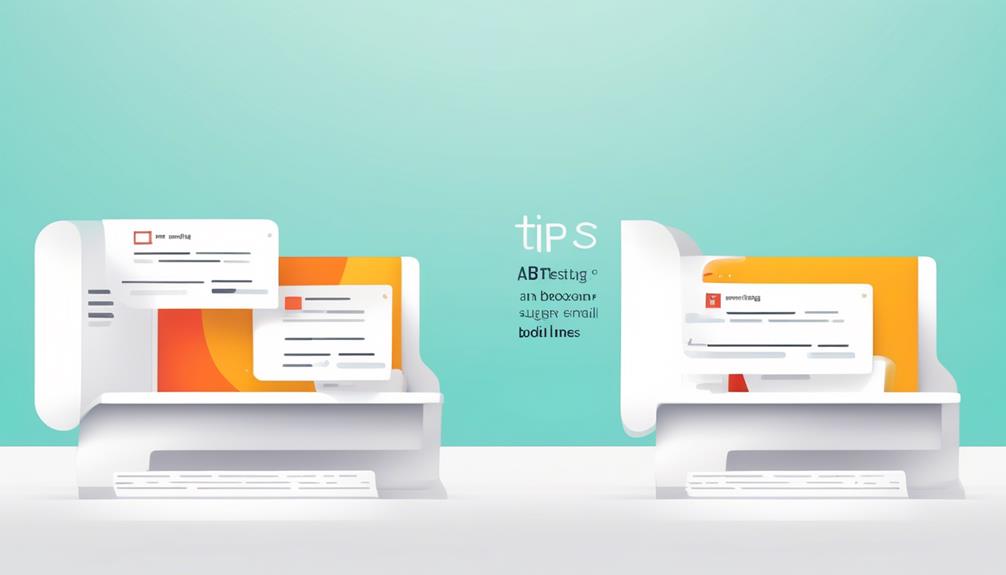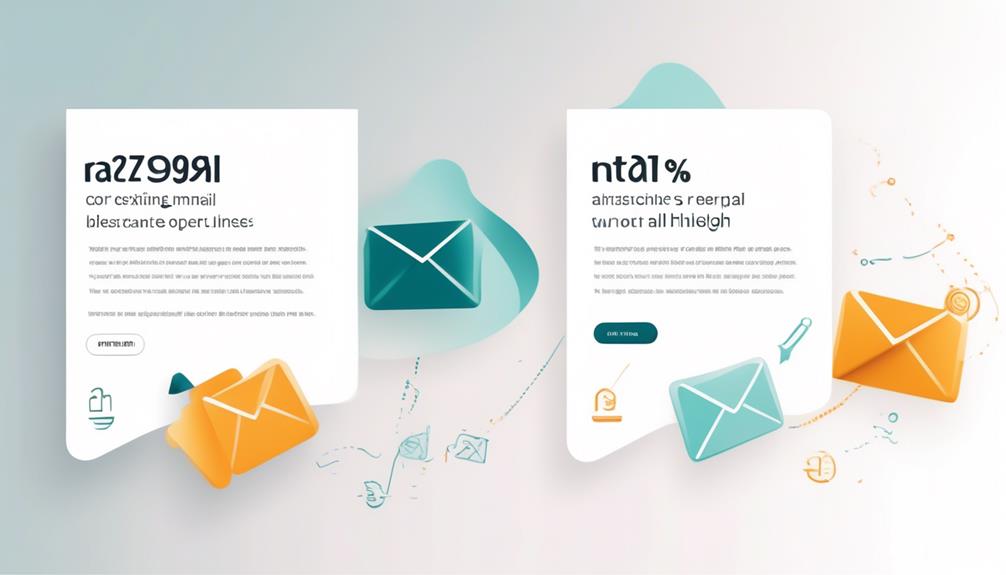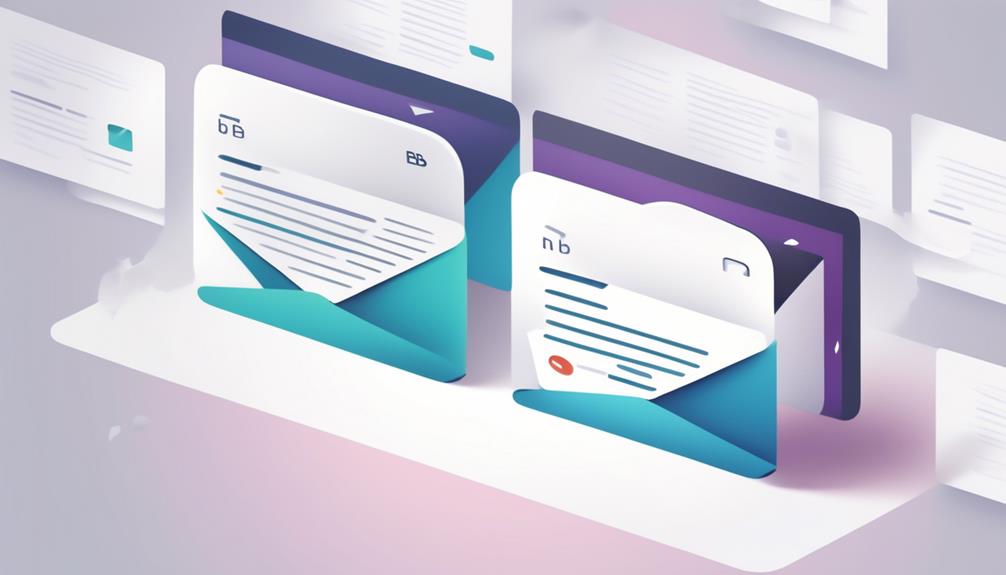When facing the difficult question of how to increase email click-through rates, one proven strategy shines through: A/B testing.
As marketers, we strive to uncover the enigmatic elements that entice recipients to engage with our emails. A/B testing offers a methodical approach to deciphering the cryptic codes of email performance.
But what are the specific secrets it holds? How can it illuminate the path to higher CTRs and more effective email campaigns?
Join us as we unravel the mysteries and unveil the insights that A/B testing can provide, shedding light on the driving forces behind email CTR and empowering us to enhance our email marketing endeavors.
Key Takeaways
- Email CTR metrics are crucial for measuring the effectiveness of email campaigns.
- A/B testing is a valuable tool for optimizing email CTR metrics.
- Subject lines, call-to-action buttons, and email content are important variables to test in A/B testing.
- Personalization and segmentation strategies can significantly impact email CTR and engagement.
Understanding Email CTR Metrics
Understanding Email CTR Metrics is crucial for optimizing the performance of email marketing campaigns. Email CTR, or click-through rate, is a vital metric that measures the effectiveness of your email campaigns by tracking the percentage of recipients who clicked on a link or call-to-action.
By analyzing email CTR metrics, marketers can gain valuable insights into the performance of their campaigns, allowing them to make data-driven decisions to improve engagement and conversion rates.
A/B testing is a powerful tool for optimizing email CTR metrics. It involves sending out different versions of an email to a subset of your subscribers and comparing their performance to determine which version generates the highest click-through rate. Marketers can test variations of subject lines, email content, and call-to-action buttons to identify the most effective elements that drive engagement and conversions.
In addition to email CTR, other important metrics to consider include open rates and conversion rates. These metrics provide valuable information about how recipients are interacting with your emails and whether they're taking the desired actions.
Identifying A/B Testing Variables
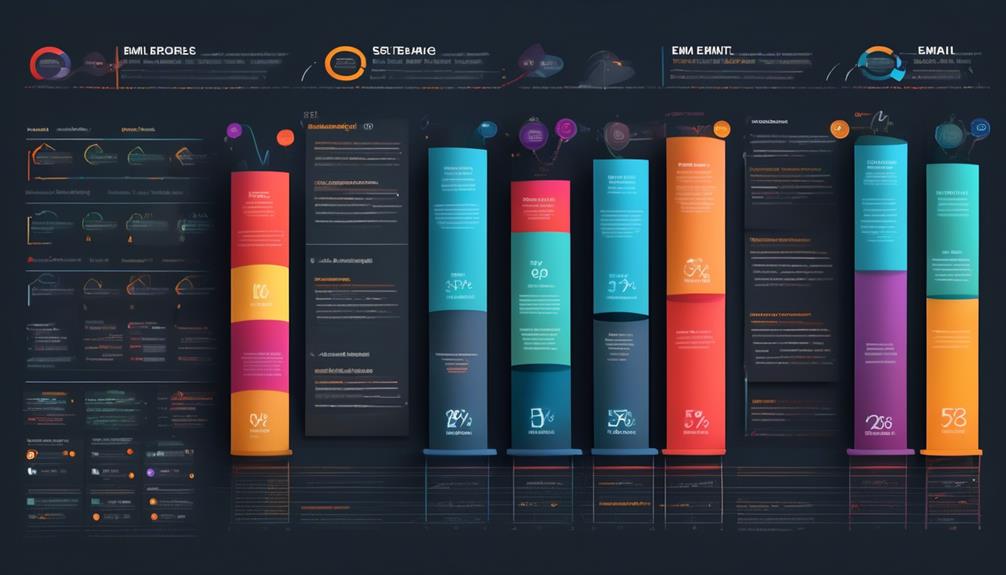
To optimize email CTR metrics through A/B testing, identifying key variables for experimentation is essential for improving campaign performance and maximizing engagement and conversions.
A/B testing allows for testing different versions of email subject lines to understand consumer preferences and open rates. Testing different call-to-action buttons to optimize click-through rates is a crucial A/B testing variable. Experimenting with various offers and incentives to encourage conversions is a significant variable for A/B testing in email marketing.
Personalization based on audience interests and addressing recipients by their first name in emails are key variables for A/B testing to improve engagement and open rates. Varying the frequency and timing of email sends to find the optimal cadence is an important A/B testing variable for conversion rates and user engagement.
Identifying the right variables for A/B testing can provide valuable insights and results for email marketing campaigns. By experimenting with these variables, marketers can refine their strategies and enhance the effectiveness of their email campaigns, ultimately leading to improved engagement, higher click-through rates, and increased conversions.
Crafting Compelling Email Content
Crafting compelling email content involves strategically tailoring the message to resonate with recipients and drive engagement. A successful email marketing strategy hinges on testing subject lines, call-to-action buttons, personalization, layout, and timing. By testing one variable or element at a time, marketers can gain valuable insights into what resonates with their audience, leading to more engaging experiences and higher click-through rates. Segmenting your audience based on demographics, behaviors, or preferences allows for more personalized and targeted content, increasing the likelihood of successful communication. Below is a table outlining the key elements to consider when crafting compelling email content:
| Element | What to Test | Potential Impact |
|---|---|---|
| Subject Lines | Length, Personalization, Tone | Increased Open Rates |
| Call-to-Action Buttons | Color, Text, Placement | Higher Click-Through Rates |
| Personalization | Name, Location, Purchase History | Improved Relevance |
| Layout and Timing | Single Column vs. Grid, Send Time Testing | Better Engagement on All Devices |
Crafting compelling email content is essential for driving engagement and conversions, and A/B testing allows for continuous refinement to optimize content for the target audience.
Personalization and Segmentation Strategies
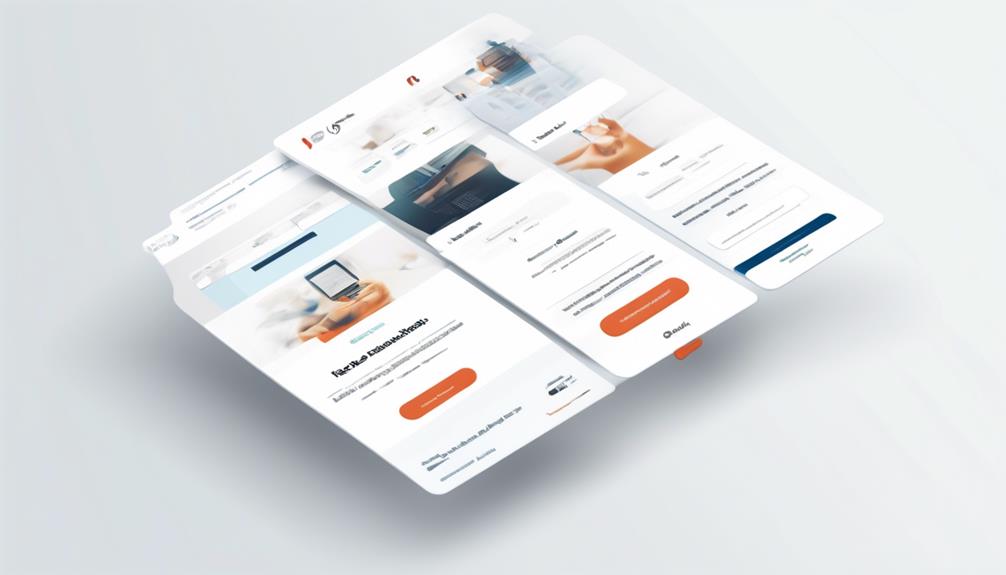
Implementing personalization and segmentation strategies in email marketing is essential for targeting specific audience segments and delivering tailored content. A/B testing allows us to personalize content based on different audience segments, ensuring that our email campaigns are more relevant and engaging.
By segmenting the email list and creating variations in subject lines, we can test different approaches to maximize open rates and ultimately improve the email CTR. Additionally, testing different call-to-action buttons can help optimize click-through rates and drive more conversions.
Crafting compelling subject lines that pique recipients' curiosity is crucial for increasing CTR, as it entices recipients to open the email and engage with the content. Personalization not only enhances the overall subscriber experience but also fosters a stronger connection with our audience, leading to better open rates in the future.
Through strategic segmentation and personalized content, we can continuously refine our email marketing strategies to drive better results and achieve our campaign objectives.
A/B Testing for Subject Lines
Let's examine how different subject line variations can impact open rates and ultimately improve email marketing performance.
By testing the best practices for subject line content, we can gain valuable insights into what resonates with our audience.
Understanding the impact of variables like length, personalization, and emojis will help us refine our strategies for better engagement.
Subject Line Variations
Subject line variations play a crucial role in optimizing email open rates and click-through rates through A/B testing. When testing two different subject lines, we can significantly impact the open rate of our email marketing campaigns. Additionally, experimenting with call-to-action (CTA) buttons can lead to a higher click-through rate.
Here are some key aspects to consider when conducting A/B testing for subject lines:
- Length of the subject line
- Use of emojis and visual elements
- Personalization and recipient addressing
- Testing different CTA buttons
- Incorporating psychological elements such as eye-catching words and open-ended questions
Open Rate Impact
Experimenting with different subject line variations has a direct impact on the open rates of email marketing campaigns. This makes it essential to understand the Open Rate Impact through A/B testing.
A/B testing allows us to measure the impact of subject lines on open rates by testing different variations with small sample sizes. By using a control group, we can compare the open rates of emails with different subject lines. This helps us determine which variations are most effective.
Testing subject line length, inclusion of emojis, and personalized content can significantly impact open rates. It's crucial to optimize subject lines to improve email CTR and engagement.
Understanding the open rate impact through A/B testing provides valuable insights. These insights are helpful for crafting compelling subject lines that drive higher open rates. Ultimately, this improves the overall email marketing performance.
Testing Best Practices
A/B testing for subject lines can greatly improve the effectiveness of email marketing campaigns. It is a crucial practice for optimizing open rates and engagement. To ensure the best results, we follow these testing best practices:
- Test one variable at a time to accurately measure impact.
- Use statistical significance tools to determine the significance of differences in A/B test results.
- Consider the short-term and long-term impacts of A/B test variations.
Additionally, personalizing subject lines with the recipient's name and emojis can help gauge their impact. It is also important to experiment with different call-to-action (CTA) buttons and email copy to understand their influence on open rates and click-through metrics.
A/B Testing for Call-to-Action (CTA)
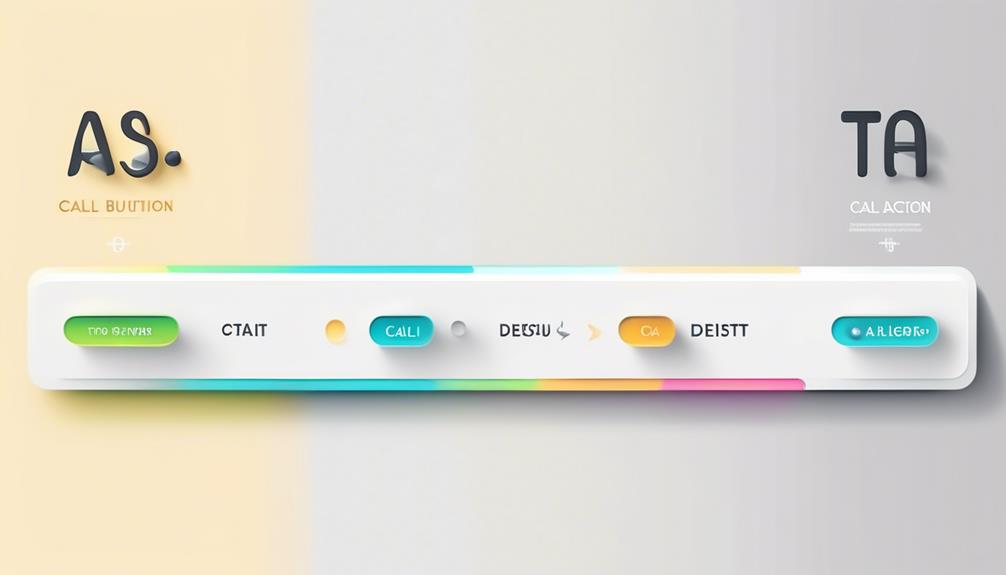
A/B testing for the call-to-action (CTA) in email marketing campaigns enhances engagement and conversion rates through targeted optimization. When conducting A/B testing for CTA buttons, marketers can compare different versions within test groups to determine which design generates the highest open rate and click rate.
By analyzing the performance of CTA buttons, email design can be tailored to better resonate with the audience, leading to improved email CTR. This targeted approach allows for personalized content based on audience segments, ensuring that the CTA is effective across various devices. Marketers can identify the most effective format for different devices, ultimately enhancing the overall performance of the email campaign.
A/B testing for the CTA enables continuous refinement and improvement of email campaigns, driving higher engagement and conversion rates. As a result, A/B testing for the CTA is an essential practice for mastering the optimization of email marketing campaigns.
Image and Design A/B Testing
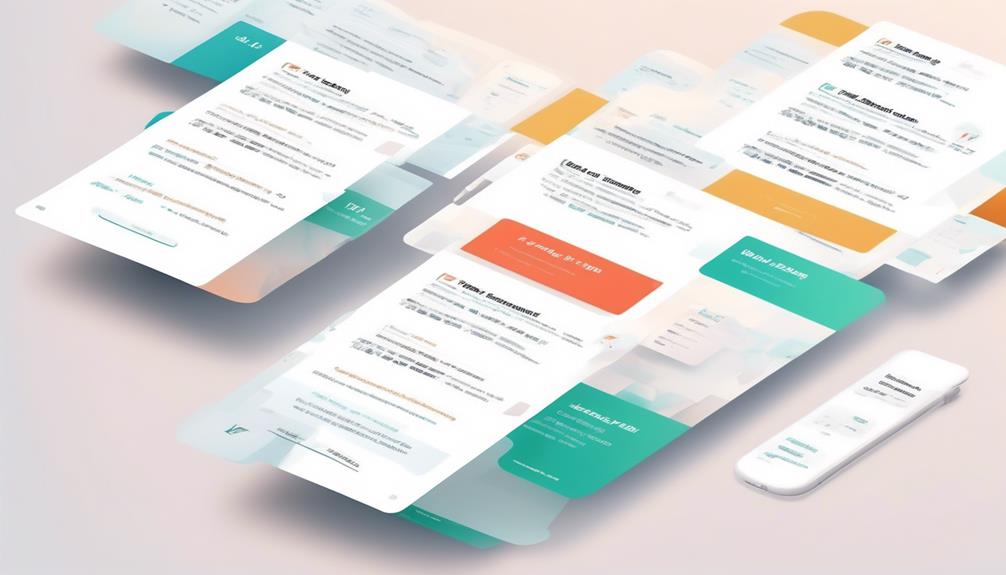
When assessing email marketing effectiveness, the impact of visual elements can be gauged through image and design A/B testing. This testing process involves comparing different visual elements in emails to understand their impact on user experience, open rates, and click-through rates.
Here are five key aspects of image and design A/B testing:
- Comparison of variations in images, layouts, and designs to optimize visual appeal and user interaction
- Measurement of the effectiveness of different image and design choices in driving open rates and click-through rates
- Data-driven decisions to enhance the visual appeal and impact of email marketing campaigns
- Refinement and improvement of the visual aspects of email content for better engagement
- Utilization of A/B testing to make informed decisions about layout and design to improve email CTR
Image and design A/B testing allows marketers to make informed decisions about the visual elements of their email content, ultimately leading to more effective engagement and higher email CTR.
Timing and Frequency A/B Testing

After optimizing the visual appeal and design of email content through A/B testing, we now turn our focus to evaluating the timing and frequency of email delivery for maximizing engagement.
Timing and frequency A/B testing plays a crucial role in unlocking secrets to enhancing email click-through rates (CTR) and open rates. Through iterative testing, we can determine the most opportune times to send emails and the optimal frequency for reaching recipients who are most likely to engage.
A/B testing allows us to experiment with different times and days for email sends to identify patterns in recipient behavior. Understanding when your audience is most likely to open your emails can significantly impact CTR.
Additionally, testing the frequency of email communication ensures that we strike the right balance between staying engaged with recipients and avoiding overwhelming them.
Mobile Optimization Testing
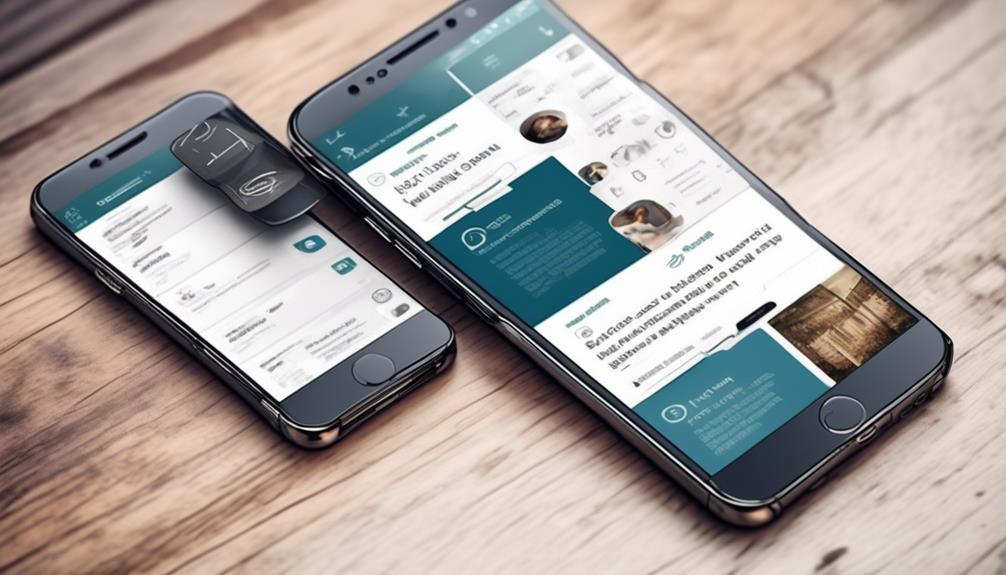
Optimizing emails for mobile devices through A/B testing is essential for maximizing engagement and click-through rates.
Mobile optimization testing allows us to understand the impact of different email layouts on mobile engagement. A/B testing reveals the most effective call-to-action (CTA) button designs for mobile users and provides insights into the impact of personalized content on mobile engagement.
Additionally, it helps in optimizing the timing and frequency of email delivery for mobile users, enhancing the overall click rate. When conducting mobile optimization testing, we can experiment with various subject lines to determine which ones resonate best with mobile recipients, ultimately improving the email CTR.
These test results play a crucial role in refining marketing strategies, ensuring that emails are tailored to the preferences and behaviors of mobile users. By employing mobile optimization testing, we can identify and implement the most effective strategies to enhance the email CTR and drive meaningful engagement on mobile devices.
Analyzing A/B Testing Results
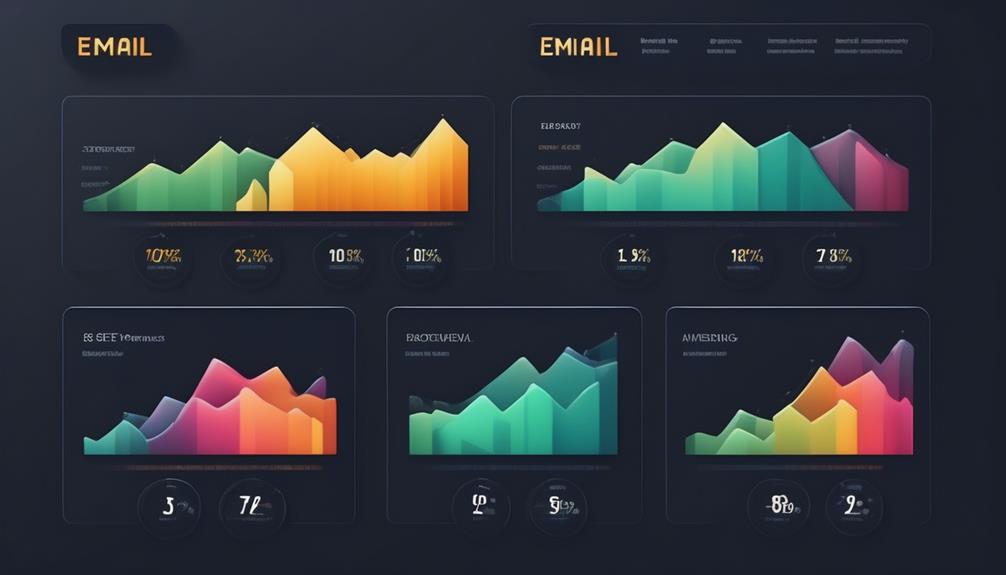
Let's start by comparing conversion rates between the A and B versions to see which one performed better.
After that, we'll use statistical significance tools to determine if the differences are meaningful.
These insights will guide our optimization efforts for future email campaigns.
Conversion Rate Comparison
By comparing conversion rates from A/B testing results, we can analyze the effectiveness of different marketing elements and make data-driven decisions for email campaigns. This comparison helps us understand what resonates best with our audience and drives higher engagement.
When analyzing conversion rate comparison, we focus on several key elements such as CTA buttons, subject lines, open rate, click rate, and email content. By scrutinizing these components, we can pinpoint which aspects of our emails are driving the most conversions and adjust our strategies accordingly.
This approach allows for a more refined and optimized email marketing strategy, leading to improved email CTR and overall campaign performance.
- CTA buttons
- Subject lines
- Open rate
- Click rate
- Email content
Statistical Significance Determination
In analyzing A/B testing results, we employ statistical significance tools to determine the meaningful differences between the test versions. It's crucial to understand the statistical significance of the results to make informed decisions about email campaigns. Here's a table to illustrate how statistical significance impacts A/B testing results:
| Metric | Version A CTR | Version B CTR | Statistical Significance |
|---|---|---|---|
| Email Subject Lines | 12% | 13% | Yes |
| Testing Duration | 1 week | 2 weeks | No |
| Engagement Metrics | 25% open rate | 28% open rate | Yes |
Insights for Optimization
Analyzing A/B testing results not only determines statistical significance but also provides valuable insights for optimizing email marketing campaigns. Understanding the impact of small improvements from A/B testing on overall marketing efforts is crucial.
It's essential to recognize A/B testing as an iterative process for continuous improvement of email campaigns. Documenting and comparing A/B test results is vital to make data-driven decisions for future campaigns.
Furthermore, recognizing the significance of statistical tools in determining the effectiveness of A/B test variations is essential for successful email marketing. These insights gleaned from A/B testing can inform decisions on subject line optimization, layout design, and content strategy, ultimately leading to improved email CTR and overall campaign performance.
Implementing A/B Testing Insights

To effectively implement A/B testing insights in email marketing, marketers should begin by setting clear goals and identifying the specific metric they aim to improve. Whether it's the email click-through rate (CTR), open rate, or engagement with specific content, a clear objective provides direction for the A/B testing process.
When conducting A/B tests, it's essential to test two variations, such as different subject lines or content formats, to measure the percentage difference in performance. By analyzing the results, marketers can gain valuable insights into what resonates best with their audience.
Once insights are gathered, it's crucial to optimize future email campaigns based on these findings. For example, if a particular subject line leads to a higher open rate, incorporating similar language or style in future subject lines can potentially improve overall email CTR.
A/B testing insights aren't only about understanding current performance but also about using that knowledge to drive future success in email marketing campaigns.
Best Practices for A/B Testing
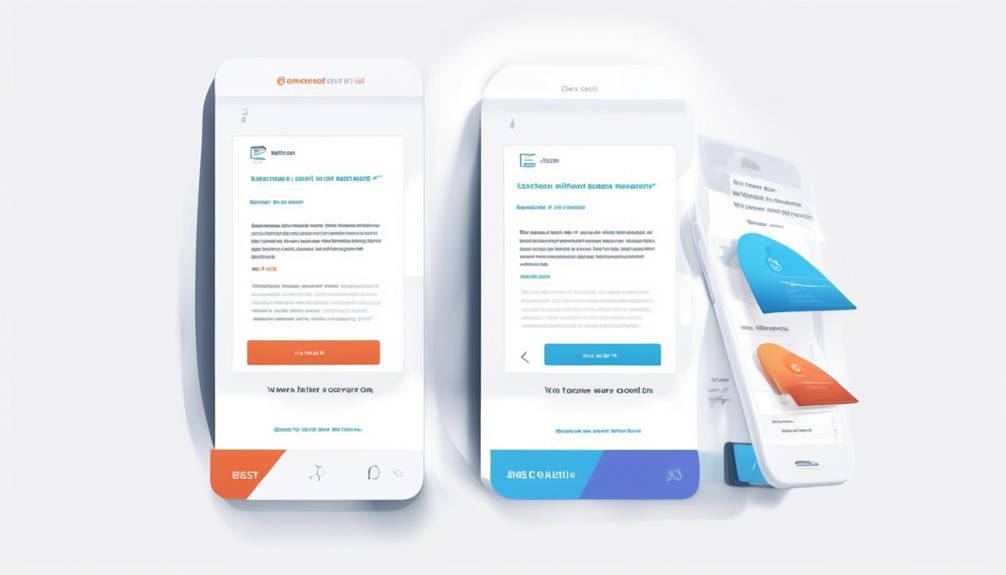
When implementing A/B testing in email marketing, it's essential to follow best practices to optimize the effectiveness of email campaigns. To ensure successful A/B testing, consider the following best practices:
- Set Clear Goals: Clearly define the metrics or goals you aim to improve through A/B testing, such as click-through rate (CTR), open rate, or conversion rate.
- Test One Variable at a Time: To accurately measure the impact of changes, test only one variable at a time. This could include subject lines, call-to-action buttons, or email content.
- Ensure a Significant Sample Size: Collect data from a sufficiently large audience to ensure statistical significance and reliable results.
- Allow Sufficient Testing Time: Avoid rushing the A/B testing process. Allow enough time to gather substantial data and draw meaningful conclusions.
- Segment Your Audience: Segment your email list to target specific groups with tailored content. By segmenting based on demographics, behavior, or past interactions, you can optimize the relevance of your emails and enhance engagement.
Implementing these best practices will help drive improvements in email marketing campaigns and optimize the impact of A/B testing on your email metrics.
Tools for A/B Testing Analysis
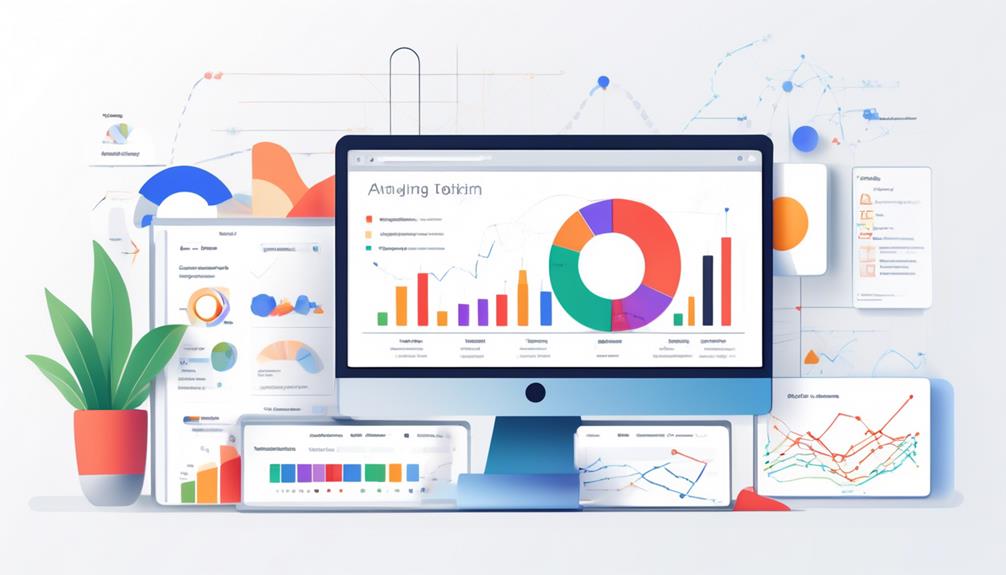
Utilizing advanced analytics tools, we can effectively analyze the results of A/B testing to gain valuable insights into the performance of email marketing campaigns. A/B testing tools offer various capabilities for in-depth analysis, enabling us to measure email CTR, compare subject lines, and assess different segmentation strategies. These tools provide essential metrics such as open rates, click-through rates, and conversion rates, allowing us to evaluate the impact of A/B testing on these critical performance indicators.
Additionally, A/B testing tools facilitate the application of statistical tests to determine the significance of differences between the test variations. Through these tools, we can confidently assess the effectiveness of our email campaign elements and make data-driven decisions to optimize future strategies.
Furthermore, these tools enable us to analyze the performance of different audience segments, providing insights into how variations resonate with specific subscriber groups. By leveraging A/B testing tools for comprehensive analysis, we can refine our email marketing strategies, enhance engagement, and ultimately improve the overall effectiveness of our campaigns.
How Can A/B Testing Drive Email CTR and Unlock Secrets?
A/B testing is a powerful tool to boost email CTR with A/B testing insights. By comparing different elements like subject lines or call-to-action buttons, you can uncover what resonates with your audience. This data-driven approach can unlock secrets to improving engagement and ultimately driving more conversions through your email campaigns.
Frequently Asked Questions
What Is the Purpose of a B Testing in Email Marketing?
We use A/B testing in email marketing to compare different versions of elements like subject lines, content, or calls to action.
This allows us to make data-driven decisions to improve our campaigns.
By analyzing the performance of each version, we gain insights into what resonates with our audience and can optimize our strategies.
A/B testing is essential for refining our email marketing efforts and maximizing the impact of our campaigns.
What Is the Importance of a B Testing While Building a Newsletter?
When building a newsletter, A/B testing is crucial. It allows us to fine-tune our content and design to maximize engagement. By testing different elements, we can pinpoint what resonates best with our audience, leading to higher click-through rates and conversions.
It's like honing a masterpiece to perfection. A/B testing empowers us to continuously improve and tailor our newsletters, ensuring they deliver maximum impact and value to our subscribers.
How Does AB Testing Work?
AB testing works by comparing two versions of a marketing element to make data-driven decisions. We create two versions, measure their performance, and use statistical tools to determine the impact of differences.
We identify goals, create versions, assign a random audience, ensure sufficient sample size and testing duration. Then we compare performance, consider the magnitude of differences, and make iterative improvements.
Best practices include setting clear goals, testing one variable at a time, ensuring a significant sample size, and segmenting the audience.
What Should You Test in an a B Test if You Want to Optimize the Click Rate?
When optimizing click rates through A/B testing, we should experiment with various elements like:
- Subject lines
- Emojis
- Call-to-action buttons
- Offers
- Personalized content
By testing long vs. short subject lines, presence of emojis, different call-to-action buttons, various offers, and personalized content, we can gain insights into what resonates best with our audience and drives higher click-through rates.
This iterative approach helps us refine our email strategy for better engagement and conversion.
Conclusion
After diving into the world of A/B testing for email click-through rates, it's clear that unlocking the secrets behind what drives email CTR is no easy feat. With the power of A/B testing, we can unravel the mysteries of email marketing and optimize our strategies.
So, here's to crafting compelling content, personalization, and segmentation – all while analyzing results and implementing insights. Who knew unraveling secrets could be this much fun?
Cheers to A/B testing!
